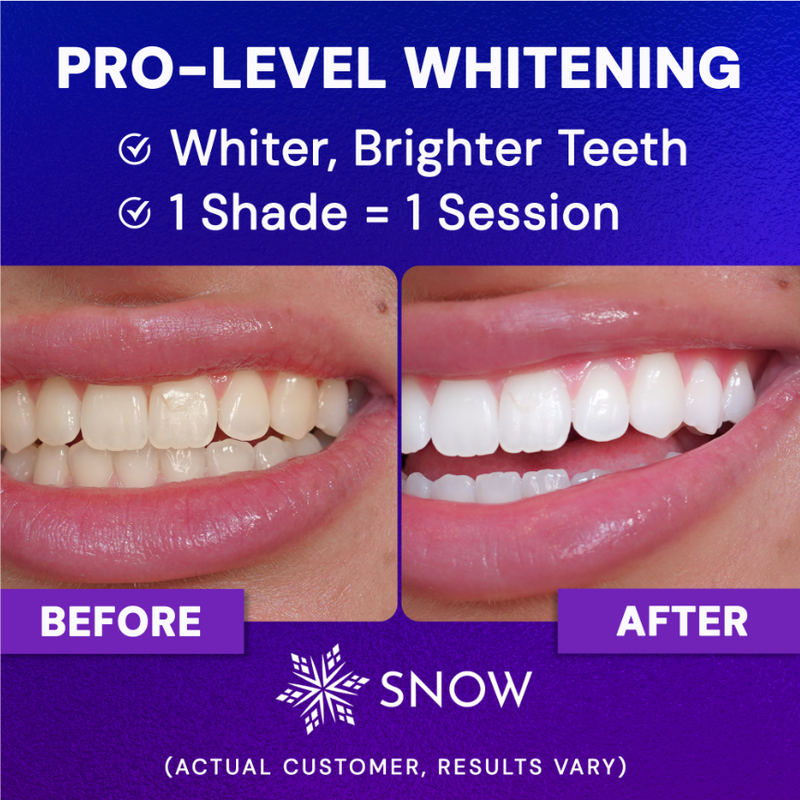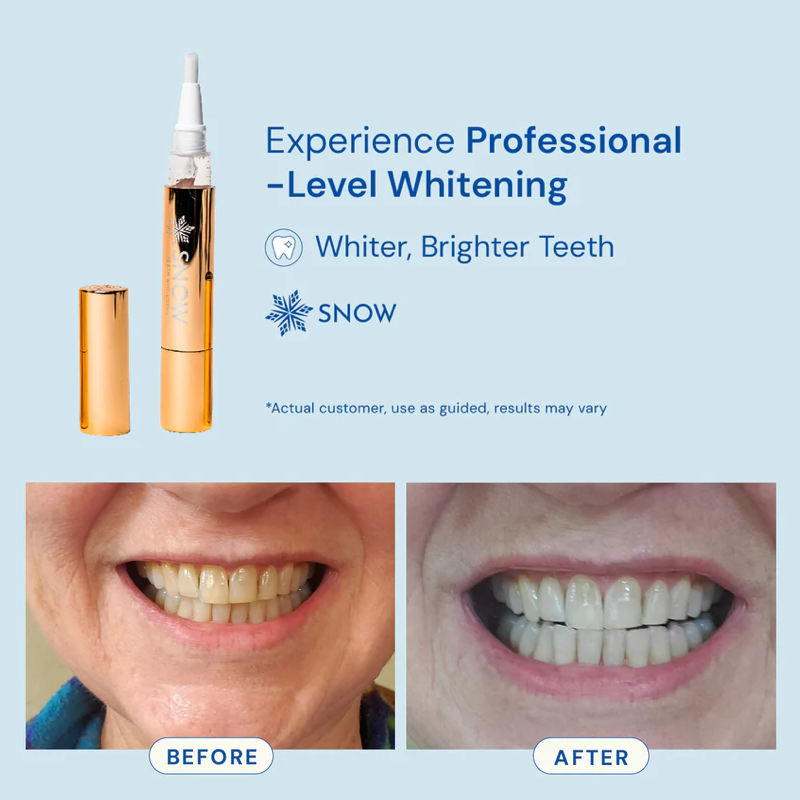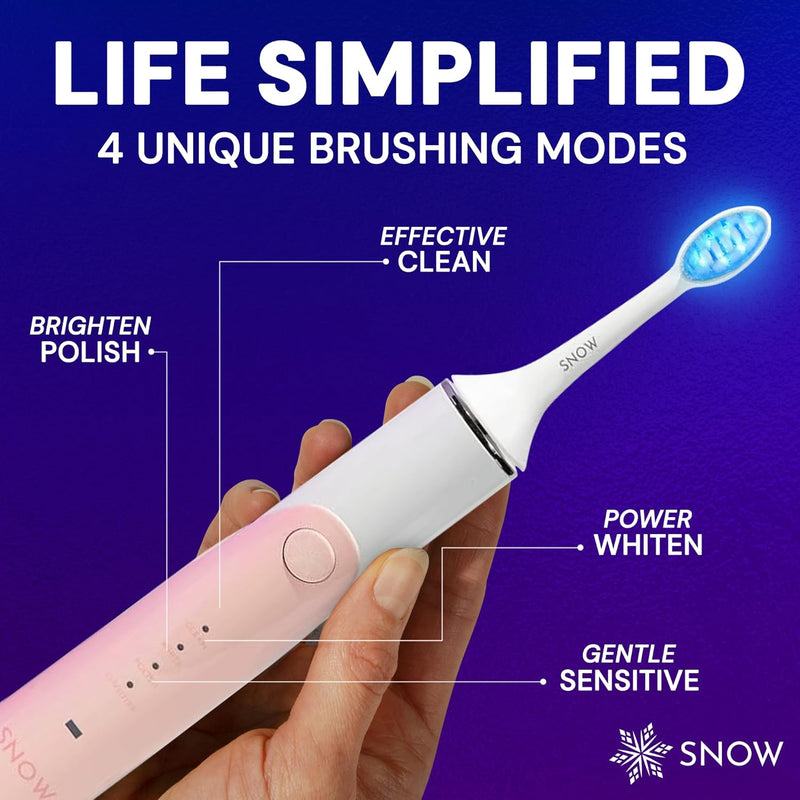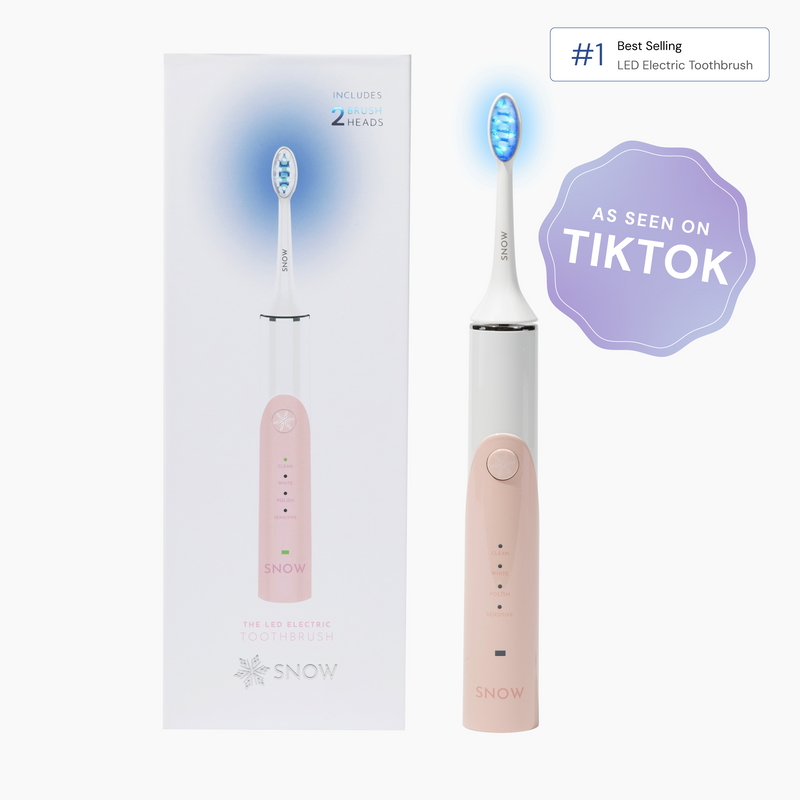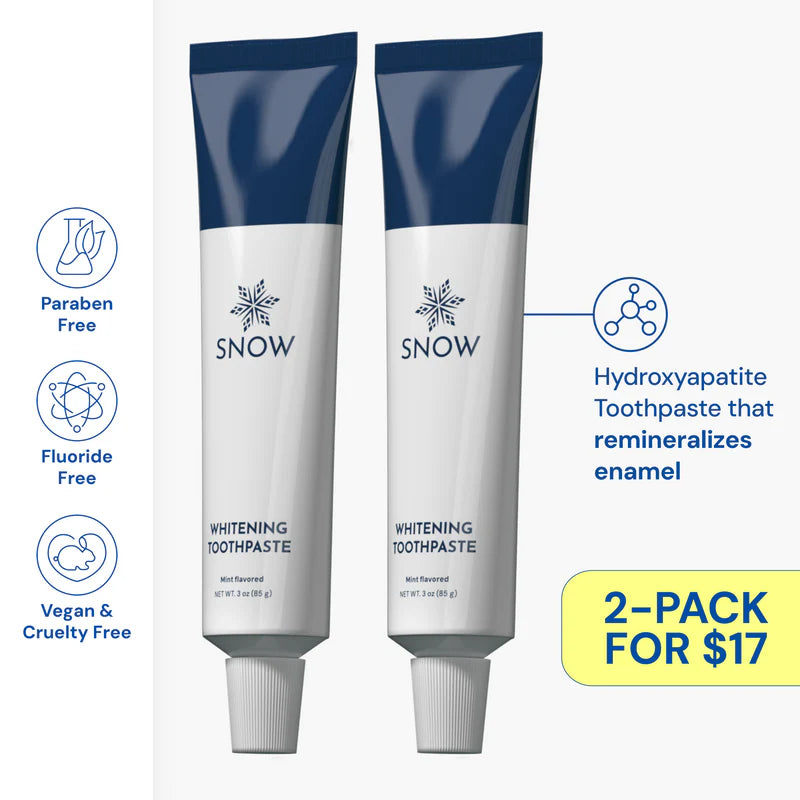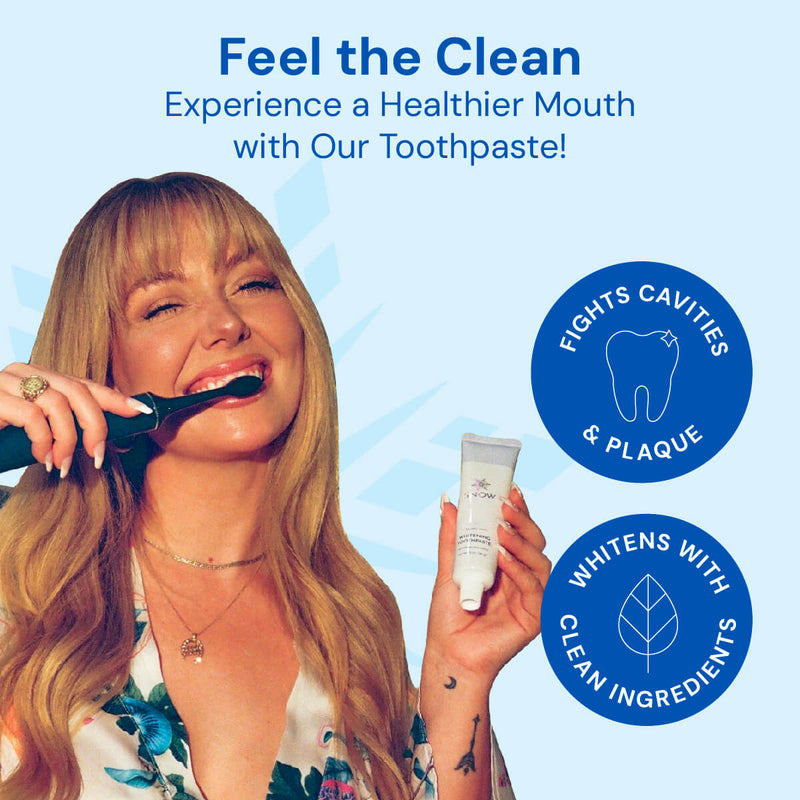Teeth stains come in many forms and can be caused by various factors. Some of the most common teeth stains include extrinsic stains, intrinsic stains, and age-related teeth stains.
Extrinsic stains are surface tooth discoloration stains that are caused by factors such as smoking, chewing tobacco, drinking coffee or tea, and eating certain foods. These tooth stains can usually be removed with regular teeth cleaning and an excellent oral hygiene routine.
On the other hand, intrinsic stains are tooth discolorations that occur within the tooth itself and are caused by factors such as excessive fluoride exposure or trauma to the tooth. This tooth stain is often more difficult to remove and may require professional treatment.
Age-related teeth stains are common as we age and can be caused by the gradual accumulation of surface stains over time, as well as changes in the tooth's structure and composition. These stains can be caused by poor oral hygiene, genetics, and certain medical conditions.
SEVEN TYPES OF TOOTH DISCOLORATION
There are several types of teeth stains, including:
-
Extrinsic teeth stains: Extrinsic teeth stains are surface stains that are caused by factors such as smoking, drinking coffee or tea, and eating certain foods. These stains can usually be removed with regular teeth cleaning and a good oral hygiene routine. Extrinsic tooth discoloration is relatively easy to fix with tooth stain whiteners.
-
Intrinsic teeth stains: Intrinsic teeth stains occur within the tooth itself and are caused by factors such as excessive fluoride exposure or trauma to the tooth. This intrinsic tooth discoloration is often more difficult to remove than surface-stained teeth. It may require professional treatment, such as teeth whitening or bonding.
-
Age-related stains: Age-related stains are common as we age and can be caused by the gradual accumulation of surface stains over time, as well as changes in the tooth's structure and composition. These stains can be caused by poor oral hygiene, genetics, and certain medical conditions.
-
Trauma stains: Trauma stains can happen when a tooth is damaged by injury or accident, which can cause the tooth to change color.
-
Medication stains: Certain antibiotics, antihistamines, and blood pressure medications can discolor teeth, leading to stains.
-
Dental Restoration stains: Dental restorations, such as fillings and crowns, can also discolor teeth over time.
-
Tetracycline stains: Tetracycline, a type of antibiotic, can cause stains on the teeth if taken during certain critical periods of tooth development.
It's important to note that different types of stains require different types of treatment and that a dental professional should be consulted to determine the best course of action.
PREVENTING TOOTH STAINS
Here are some ways to prevent teeth stains:
-
Brush and floss regularly: Brushing twice a day and flossing once a day can help remove surface stains and plaque that can lead to discoloration.
-
Use toothpaste with hydroxyapatite: Fluoride can help strengthen tooth enamel and make it more resistant to stains, but hydroxyapatite is less abrasive and overall better than fluoride toothpaste.
-
Limit or avoid stain-causing foods and drinks: Foods and drinks like coffee, tea, red wine, and dark berries can cause stains. Limiting or avoiding them can help prevent discoloration.
-
Stop smoking or using tobacco products: Smoking and using tobacco products can cause severe stains on teeth.
-
Visit your dentist regularly: A regular dental checkup and cleaning can help remove surface stains and plaque that can lead to discoloration.
-
Use a straw when drinking: A straw can help reduce the amount of contact your teeth have with staining liquids, such as coffee and tea.
-
Consume food that can clean teeth: Eating crunchy fruits and vegetables, like apples and carrots, can help remove surface stains and promote healthy teeth.
-
Drink water: Drinking water can help remove food particles, neutralize acid, and rinse away surface stains.
It's important to note that preventing teeth stains can be challenging, especially if you have certain medical conditions or are taking certain medications. A dental professional can help you determine the best action to prevent tooth stains based on your needs and circumstances.
REMOVING DIFFERENT TYPES OF TEETH STAINS WITH TEETH WHITENING
While in-office teeth whitening is an option for fixing discolored teeth and tooth enamel staining, many lower-cost at-home products work great. Among them, Snow makes several at-home treatments including:
SNOW LED WHITENING KIT
Snow Teeth Whitening offers a range of products to help people achieve a brighter and whiter smile.
The first step in using Snow products is to select the right kit for your needs. The company offers several options, including a wired LED light kit and a wireless LED light kit. The wired LED light kit comes with a mouth tray and the whitening serum, while the wireless LED light kit has a built-in light and is rechargeable.
Once you have your kit, you can start using it to whiten your teeth. To use the Snow whitening system, apply the serum to the mouth tray and place it over your teeth.
Turn on the LED light and let it shine on your teeth for the recommended time, typically between 10 and 30 minutes. Repeat this process daily until you achieve your desired level of whiteness.
SNOW WHITENING STRIPS
To use Snow whitening strips, clean your teeth by brushing and rinsing your mouth, then peel the whitening strips off the backing paper and apply them to your front teeth, ensuring they are in close contact and covering as much surface as possible.
Leave the strips on for the recommended time, typically 10 to 30 minutes, and avoid eating, drinking, or talking while they are on. Gently peel the strips off after the recommended time, rinse your mouth with water, and repeat the process daily until you achieve the desired whiteness from extrinsic tooth stain issues.
SNOW WHITENING TOOTHPASTE AND MOUTHWASH
To use Snow whitening toothpaste and mouthwash, brush your teeth with the whitening toothpaste twice a day as you would with regular toothpaste. After brushing, rinse your mouth with the whitening mouthwash for the recommended time, typically 30 seconds to 1 minute.
Make sure to use the whitening toothpaste and mouthwash regularly as part of your oral hygiene routine for the best results. It's recommended to use the whitening toothpaste and mouthwash together for optimal whitening results.
CONCLUSION
Several different types of teeth stains can occur, each with its unique causes and treatments.
Extrinsic stains, which occur on the surface of the teeth, can often be removed with regular teeth cleaning and a good oral hygiene routine.
Intrinsic stains within the tooth structure may require professional treatment such as teeth whitening or bonding. Age-related stains, trauma, medication, and dental restoration stains can also discolor teeth over time and may require professional treatment.
FAQS
CAN TEETH STAINS BE REMOVED?
With teeth whitening products or procedures, stains that develop on the surface of your teeth can typically be eliminated or diminished. You can either try at-home remedies or have your dentist perform these.
WHAT TOOTH STAINS CAN NOT BE REMOVED?
Intrinsic stains can be concealed with cosmetic choices but cannot be eradicated. Most extrinsic teeth stains can be eliminated with whitening. Professional whitening may be required for some severe, deeply ingrained set-in stains.
WHAT STAINS YOUR TEETH THE MOST, COFFEE OR SODA?
If coffee's black pigment is exposed for an extended period of time to a tooth with compromised enamel, it can also cause teeth stains. Coffee is a better beverage option for overall dental health than soda, which can discolor teeth due to its dark pigment.
WHAT ARE BROWN TEETH STAINS CALLED?
Brown stains can mimic tooth decay and cavities. In contrast, tartar, a yellow or brown deposit that forms along the gum line as plaque hardens, is tooth discoloration that can resemble tooth decay and cavities.













































